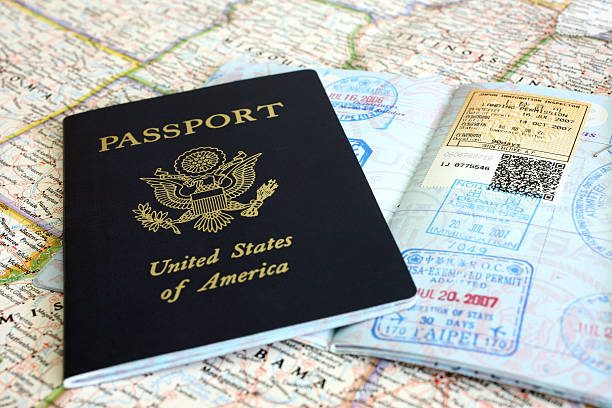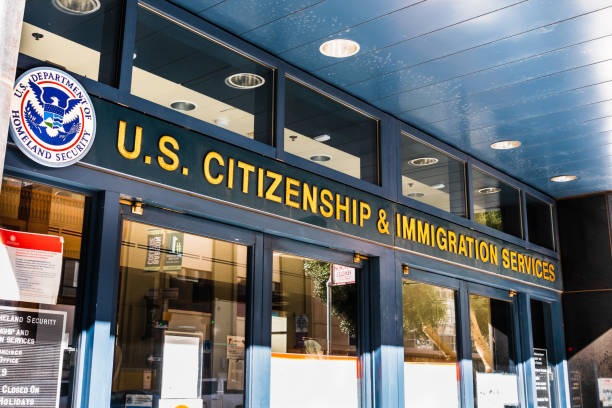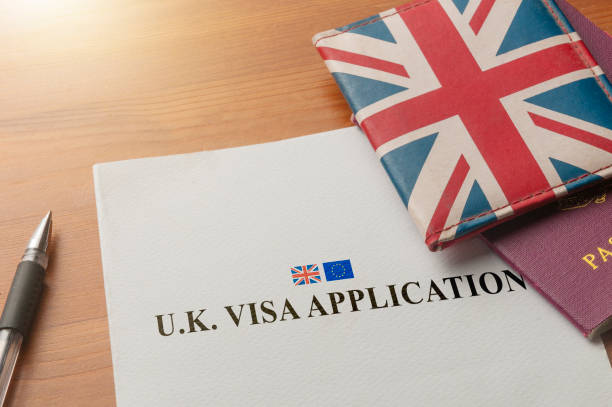How To Get Job Permit in Canada with Visa in 2024. – Full Process
Canada continues to be one of the top destinations for international workers in 2024, with its robust economy, diverse job opportunities, and welcoming immigration policies. If you’re looking to work in Canada, understanding how to secure a job permit along with the appropriate visa is crucial. In this article, we’ll guide you through the essentials of obtaining a job permit in Canada, the types of visas available, and what you need to know to navigate the process smoothly.
Understanding Job Permits in Canada
What is a Job Permit?
A job permit, also known as a work permit, is a legal document issued by the Canadian government that allows a foreign national to work in Canada for a specific employer or in a specific job role. It is a vital component for anyone looking to gain employment in Canada as a non-resident.
Types of Job Permits Available in 2024
Canada offers several types of job permits, each catering to different circumstances. The most common ones include:
- Employer-Specific Work Permit: This permit is tied to a specific employer, meaning you can only work for the employer listed on the permit.
- Open Work Permit: Unlike the employer-specific permit, the open work permit allows you to work for any employer in Canada, providing more flexibility.
- Post-Graduation Work Permit (PGWP): This permit is available to international students who have completed their studies at a Canadian educational institution, allowing them to work in Canada and gain valuable work experience.
Eligibility Criteria for a Job Permit
General Eligibility Requirements
To be eligible for a job permit in Canada, you must meet several basic criteria, including:
- A valid job offer from a Canadian employer
- Proof of sufficient financial resources to support yourself during your stay
- Clean criminal record (a police clearance certificate may be required)
- Medical examination (if necessary)
Specific Criteria Based on Job Type and Location
Certain job roles and locations may have additional requirements. For example, jobs in healthcare or childcare may require specific certifications, while positions in certain provinces might necessitate a Labor Market Impact Assessment (LMIA) from your employer.
The Visa Process: An Overview
How a Visa is Related to the Job Permit
A visa is a document that allows you to enter Canada, while a job permit allows you to work in the country. In most cases, you’ll need both to legally work in Canada. The type of visa you require depends on the type of job permit you are applying for.
Different Types of Visas Associated with Job Permits
- Temporary Resident Visa (TRV): Required for individuals from certain countries who wish to work in Canada temporarily.
- Electronic Travel Authorization (eTA): Applicable to visa-exempt foreign nationals traveling to Canada by air.
Steps to Apply for a Job Permit in Canada
Step-by-Step Guide to the Application Process
- Obtain a Job Offer: Secure a valid job offer from a Canadian employer.
- Check if an LMIA is Required: Your employer might need to obtain an LMIA before you can apply for a job permit.
- Submit the Job Permit Application: Complete and submit your job permit application online or at a Visa Application Center (VAC).
- Provide Necessary Documentation: This includes your passport, job offer letter, LMIA (if applicable), and proof of qualifications.
- Wait for Processing: Processing times can vary, so it’s essential to apply well in advance of your intended start date.
- Receive the Job Permit: If approved, you’ll receive your job permit, allowing you to work in Canada.
Required Documentation
- Valid passport
- Job offer letter
- LMIA (if required)
- Proof of education and qualifications
- Medical exam results (if required)
- Police clearance certificate (if required)
Processing Times for Job Permits
How Long Does It Take to Get a Job Permit?
The processing time for a job permit can vary depending on several factors, including your country of residence, the type of permit you’re applying for, and the completeness of your application. On average, processing times range from a few weeks to several months.
Factors Affecting Processing Times
- Volume of applications
- Specific requirements of the job permit type
- Any additional steps like medical exams or LMIA processing
Common Challenges in the Application Process
Issues Applicants Face
Applying for a job permit in Canada can be a complex process, with several potential hurdles, including:
- Delays in obtaining an LMIA
- Incomplete or incorrect documentation
- Long processing times
Tips for Overcoming These Challenges
To mitigate these challenges, ensure you:
- Apply as early as possible
- Double-check all documentation before submission
- Keep track of your application status online
Renewing a Job Permit
When and How to Renew Your Permit
If your job permit is about to expire and you wish to continue working in Canada, you’ll need to apply for a renewal. The renewal process involves submitting a new application before your current permit expires.
Important Considerations for Renewal
- Ensure you have a valid job offer for the renewal period
- Start the renewal process at least 30 days before your current permit expires
- You may continue working under the same conditions while your renewal is being processed, provided you apply before the expiry date
Job Permit for International Students
Special Provisions for Students in 2024
International students in Canada are eligible for the Post-Graduation Work Permit (PGWP), which allows them to work in Canada after completing their studies. The duration of the PGWP can be up to three years, depending on the length of the study program.
Transitioning from a Study Permit to a Job Permit
Students can transition from a study permit to a job permit by applying for the PGWP after graduation. This work experience can also help in applying for permanent residency later.
Spousal and Dependent Work Permits
How Your Spouse and Dependents Can Also Work in Canada
If you hold a valid job permit, your spouse or common-law partner may be eligible to apply for an open work permit, allowing them to work for any employer in Canada. Dependents, if of working age, may also apply for a work permit.
Eligibility and Application Process
- Your spouse must submit an application for an open work permit, either online or at a VAC.
- They must demonstrate the relationship with you (the primary permit holder).
- Dependents will need to show proof of age and relationship.
Understanding the Role of LMIA
What is the Labor Market Impact Assessment (LMIA)?
The LMIA is a document that an employer in Canada may need to obtain before hiring a foreign worker. It proves that there is a need for a foreign worker to fill the job and that no Canadian worker is available to do so.
How It Impacts Your Job Permit Application
A positive LMIA is often required for employer-specific work permits. It shows that hiring you will have a neutral or positive impact on the Canadian labor market. However, some job permits, like the open work permit, do not require an LMIA.
Job Permit vs. Permanent Residency
Differences Between a Job Permit and Permanent Residency
A job permit allows you to work in Canada temporarily, while permanent residency (PR) gives you the right to live and work in Canada indefinitely. PR also offers benefits like access to social services and the ability to apply for Canadian citizenship.
Pathways from Job Permit to PR
Gaining work experience in Canada through a job permit can pave the way to permanent residency. Programs like the Canadian Experience Class (CEC) and Provincial Nominee Program (PNP) are designed for foreign workers who wish to transition to PR.
Job Sectors in High Demand in 2024
Overview of Industries with High Demand for Foreign Workers
Canada’s labor market in 2024 is particularly strong in sectors such as:
- Information Technology (IT)
- Healthcare
- Engineering
- Skilled Trades
- Agriculture
Job Roles That Are Easier to Secure with a Permit
Certain job roles, especially in high-demand sectors, may have streamlined processes for securing a job permit. These include positions like software developers, nurses, electricians, and farm workers.
Conclusion
Securing a job permit in Canada in 2024 is a vital step for anyone looking to work in one of the world’s most dynamic economies. By understanding the various types of job permits, the application process, and the relationship between job permits and visas, you can navigate the complexities of working in Canada with confidence. Whether you’re an international student, a skilled worker, or someone looking to bring their family to Canada, there are pathways available to help you achieve your goals.
FAQs
- Can I work in Canada without a job permit?
- Generally, no. Most foreign nationals need a job permit to work in Canada, although there are some exceptions for specific job categories and short-term work.
- How do I know if I need an LMIA?
- Your employer will need to check if an LMIA is required for your position. Most employer-specific permits require an LMIA, but some jobs and programs are exempt.
- What happens if my job permit application is denied?
- If your application is denied, you can reapply with additional documentation or seek legal advice to explore other options.
- Is it possible to extend my job permit?
- Yes, you can apply to extend your job permit, provided you do so before it expires and meet the renewal criteria.
- Can I apply for permanent residency with a job permit?
- Yes, many pathways to permanent residency are available for those holding a job permit, especially if you gain Canadian work experience.




